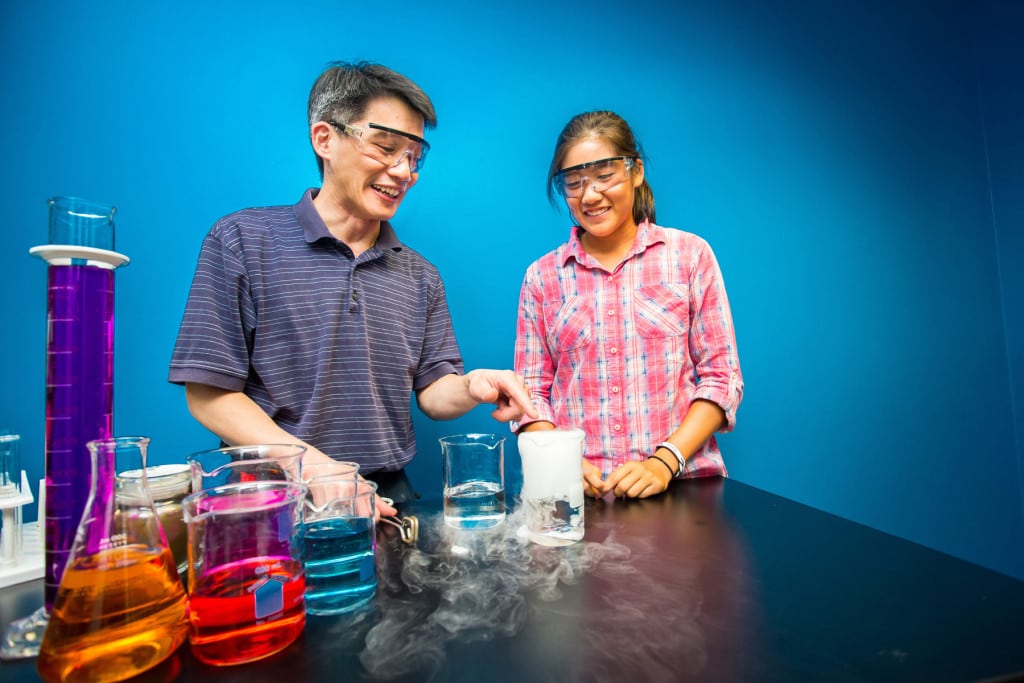
Halstrom Academy offers students one-on-one learning opportunities. PHOTO BY FRANK ARMSTRONG
If you walk into any classroom, you’re likely to find quiet students who turn in their work on time, but don’t necessarily challenge themselves beyond their comfort zone. You’ll also find bright students who become easily bored and distracted by repetitive worksheets and tests. Then there are those whose sketches in the margins of their notebooks reveal amazing artistic talent, but who might be perceived as lazy or unmotivated students.
In a traditional classroom with one teacher taking a group of 25-35 students through a lesson plan, how can these students be inspired to learn?
“Sometimes, parents accept the traditional school model, even when their kids aren’t doing well in school, because they don’t know there are other options,” says Lynna Martinez, M.Ed., vice president of Educational Programs and Services at Halstrom Academy, which specializes in one-on-one instruction.
Martinez says many types of students benefit from a one-on-one instruction model, including those with learning issues such as ADD/ADHD, dyslexia, auditory processing or social anxiety. “These students benefit from the focused and distraction-free environment,” she says. Accelerated learners who want to move ahead and aspiring athletes, actors or artists who need a more flexible school schedule because of auditions or intensive training also find that this model works for them.
But finding the right school environment is not just for children with learning disabilities or a movie deal. Many average and gifted students can feel disconnected in some environments and thrive in others.
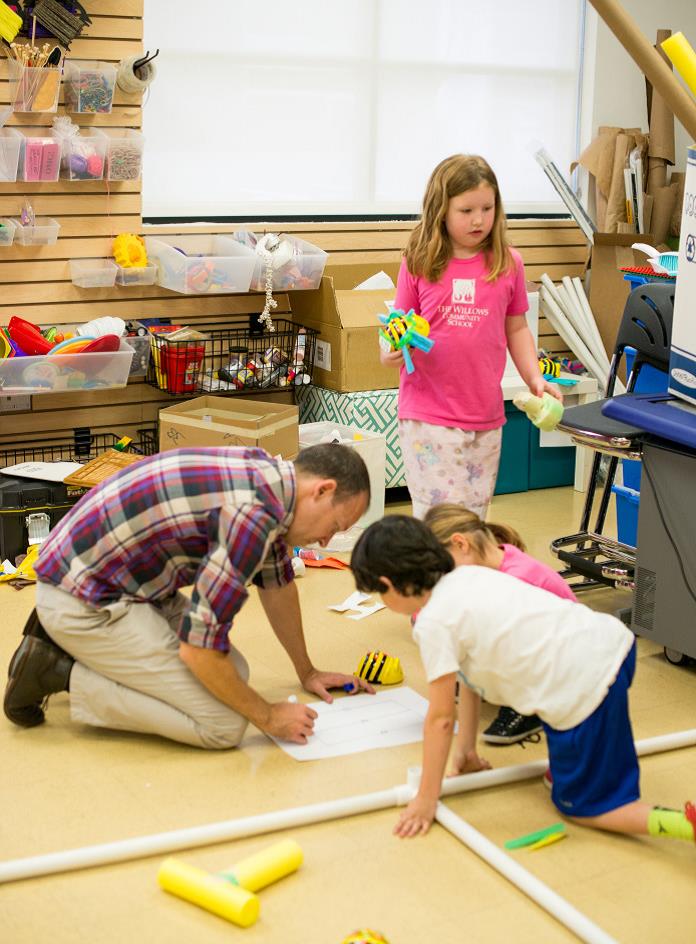
Students work on their creations at The Willows Community School’s Tinker.Make.Innovate Lab. PHOTO COURTESY THE WILLOWS COMMUNITY SCHOOL
“I work very closely with parents, and what they want most is for their children to be recognized as individuals and be supported to reach their full potential,” says Kerry Maguire, director of admissions at Chatsworth Hills Academy, a private independent school for preschool through eighth grade, which has recently been approved as a candidate for the International Baccalaureate Program.
Finding Motivation
Motivation is a critical factor to learning, says Maguire. “Some kids are content to coast until you give them the boost they need,” she says.
Where does that boost come from? A different learning experience – one that feels authentic to that child. “Give them a project that feels engaging and fun,” says Maguire.
One of the fourth-grade projects at Chatsworth Hills requires students to form a toy company and brainstorm ideas, conduct market research, create spreadsheets, design a prototype and pitch their business plans to a board of directors. “I see kids who are not super-motivated in the classroom completely engaged in this project,” Maguire says.
Tying learning to real life is a terrific motivator. The GiftedandTalented.com programs, developed by Stanford University, also showcase real-world situations through STEM-based math programs. “Kids are naturally curious and they are always wondering, ‘Why am I learning this? When will I ever use it?’” says Andrea Rogers, manager for the online learning site’s Advocate Program.
Another great way to motivate students is to tap into their creativity. “The key is to find your child’s passion,” says Rogers. “When that happens, they will soak up the information.”
Tapping Strengths
Tapping into students’ passion for science and technology is behind the Help Group’s new and innovative high school, STEM3 Academy, opening this fall. The Help Group’s nine specialized day schools offer pre-K through high school programs for students with special needs related to autism spectrum disorder, learning disabilities, ADHD, developmental delays, abuse and emotional problems.
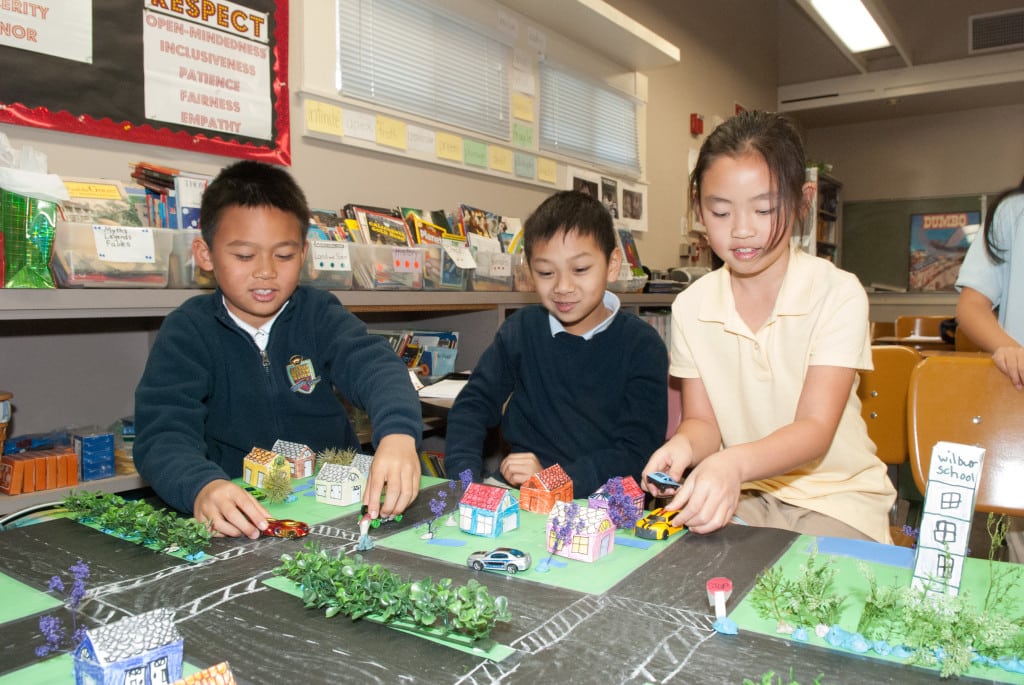
Students at Clairbourn School work collaboratively on their projects. PHOTO COURTESY CLAIRBOURN SCHOOL
STEM3 offers a rigorous curriculum, including Advanced Placement classes, with an emphasis on STEM-related subjects – Science, Technology, Engineering and Mathematics.
“Many of our students are highly gifted in math and sciences,” says Ellis Crasnow, Ph.D., director of STEM education for the Help Group and the director of STEM3 Academy. “We want to focus on their assets and their talents and allow them to stand shoulder to shoulder with their peers.”
Crasnow says the best learning environments are those that focus on your child’s strengths. “If your child loves to take things apart and put them back together, loves electronics and math, then work with those strengths,” he says. “We see kids who have difficulty socializing work really well with others when working on projects they are passionate about.”
One of the greatest joys for parents and educators is watching children excel and gain confidence once they conquer their stumbling blocks. “We see so many kids who are struggling in school, yet they have exceptional skills,” says Robert Melillo, Ph.D., founder of Brain Balance Achievement Centers, a program that combines sensory-motor stimulation, cognitive stimulation and nutrition for children with learning and developmental disorders.
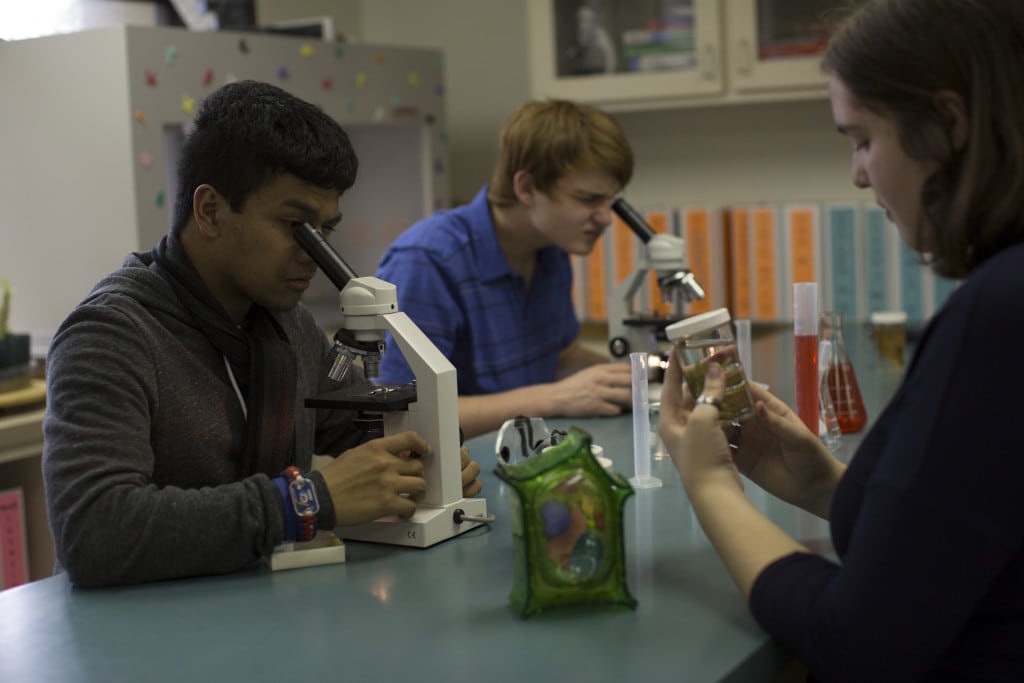
The Help Group’s Village Glen students, who will be entering the new STEM3 Academy, make discoveries during science lab. PHOTO COURTESY THE HELP GROUP
“Once you figure out what your child’s strengths and weaknesses are, the potential is limitless,” Melillo says.
Exploring Options
When searching for the best learning environment, parents should also inventory their own feelings about education. “A lot of kids will learn in many different types of environments, not just one,” says Kim Feldman, director of admissions at The Willows Community School, a private independent school based on John Dewey’s “doing by learning” theory of education. “But, not every parent will be comfortable in all schools. That’s important to remember. “
The face of education has evolved rapidly in the last two decades, with tremendous growth in online learning, home schooling and programs focusing on science and technology. Coding and robotics are now an integral part of education in many elementary schools.
At The Willows, a pre-K through eighth grade school located in Culver City, there is less emphasis on teachers lecturing in front of a class and more emphasis on students working together in centers and in small teams. “Kids do best in an environment where they are encouraged to be thinkers and problem solvers,” says Feldman. “It’s in these situations that they find their voice.”
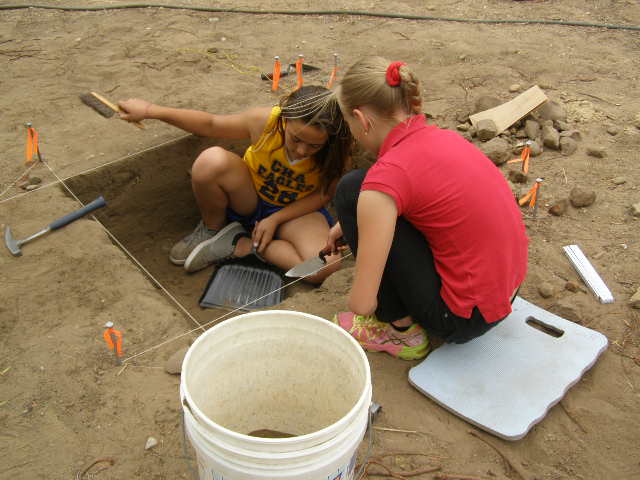
Students enjoy their outdoor classroom during the excavating unit at Chatsworth Hills Academy. PHOTO COURTESY CHATSWORTH HILLS ACADEMY
Martinez, of Halstrom Academy, suggests parents ask the following questions when looking at alternative learning environments:
- What type of students does the school serve?
- How many students are enrolled?
- Is the school accredited?
- For high schools, are classes UC/CSU certified?
- Can this school address my child’s unique learning needs?
- Can I see my child being more successful in this environment?
Janna Hawes, director of admissions at Clairbourn School, a private school serving preschool through eighth grade in San Gabriel, also stresses the importance of self-knowledge when selecting a school. “You have to match what resonates with your child and your family values,” she says.
Clairbourn offers a more traditional learning environment, with an emphasis on community and family involvement and all elements of STEAM, which are incorporated into the program starting in preschool.
“There are so many avenues to successful education. They are all steps in the journey,” says Hawes. When visiting a school or evaluating an alternative program, she adds, “look for kids who look happy, stimulated and engaged.”
Elena Epstein is L.A. Parent’s Director of Content & Strategic Partnerships.


























